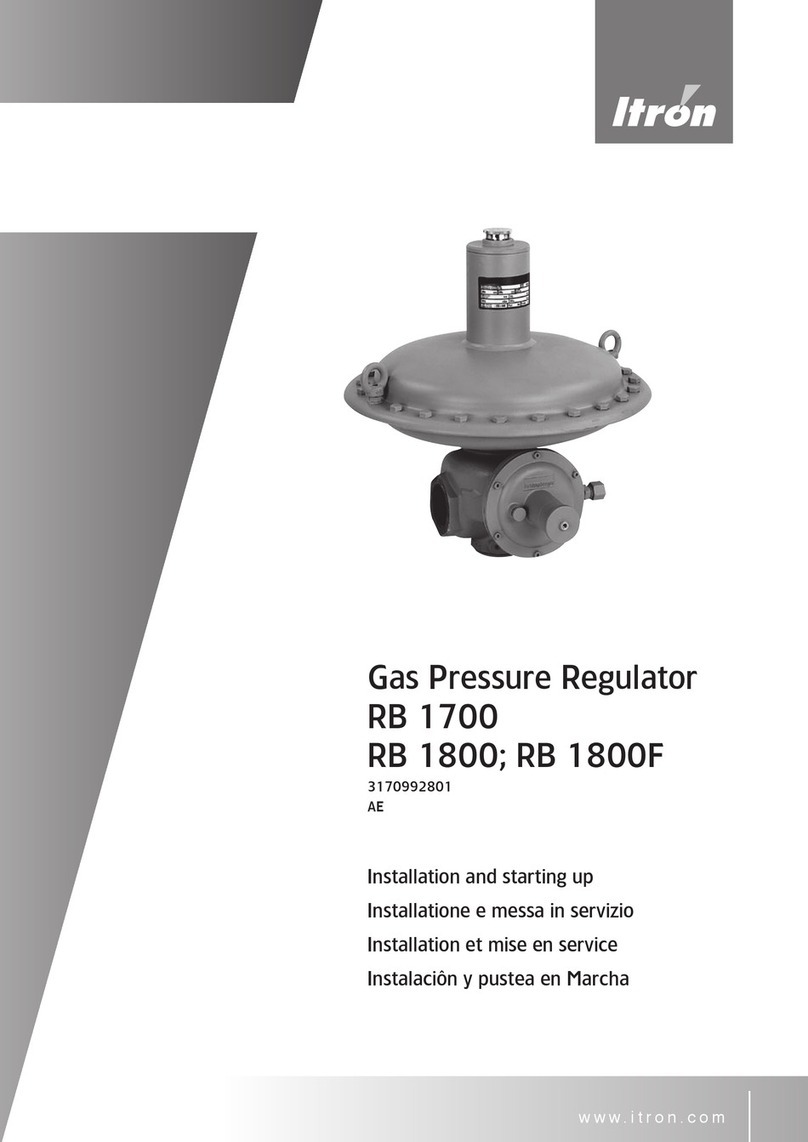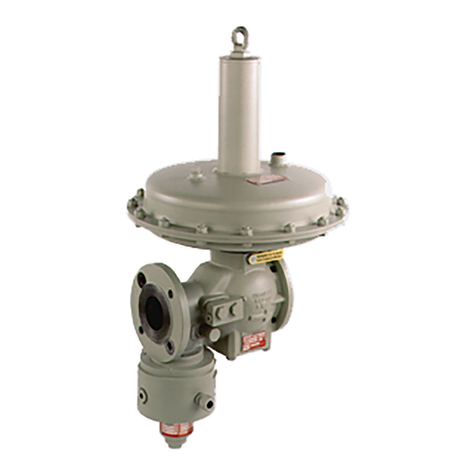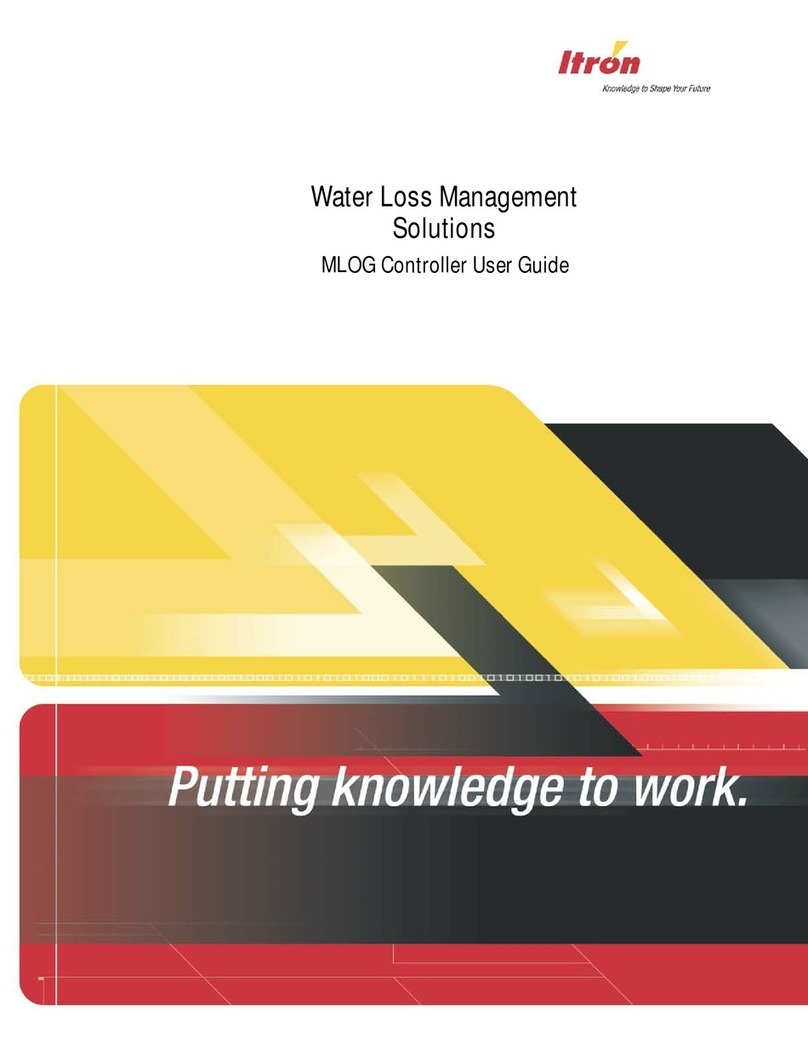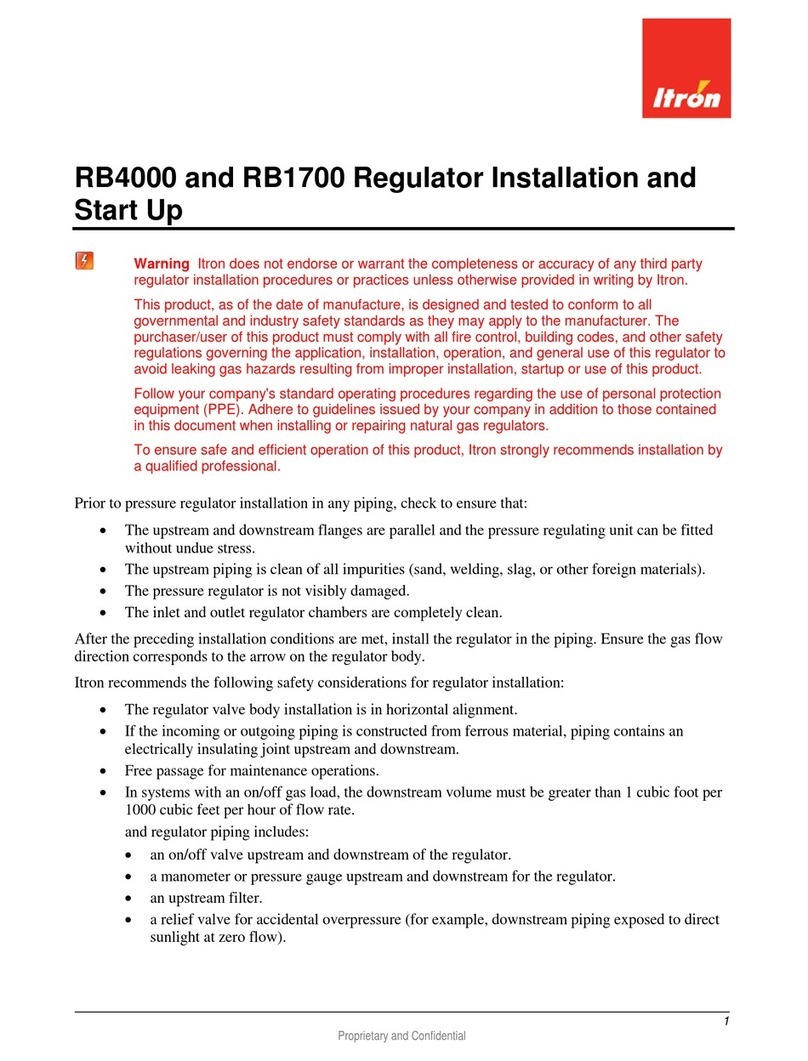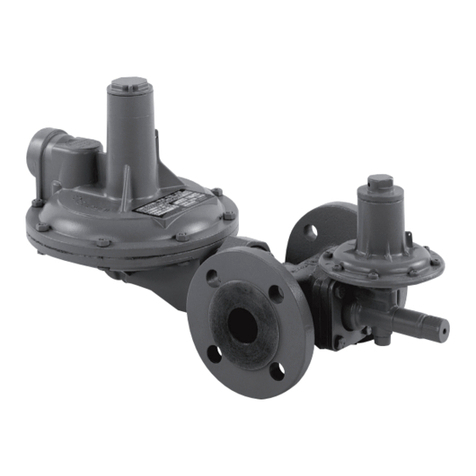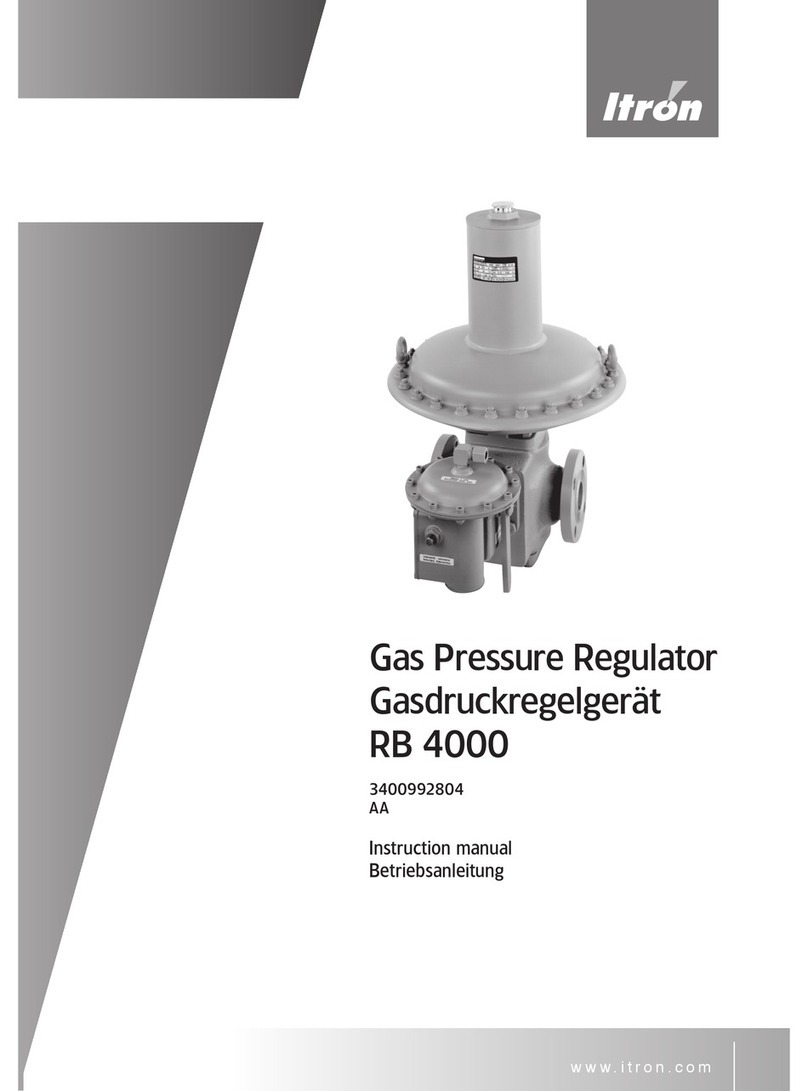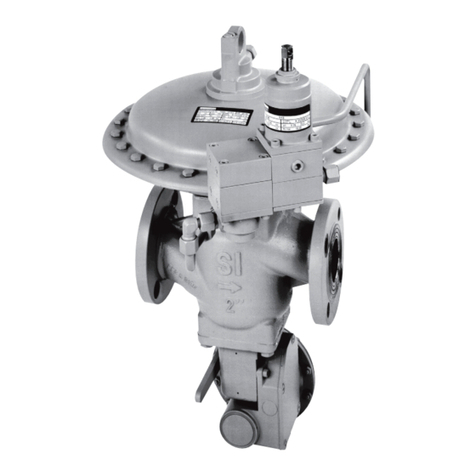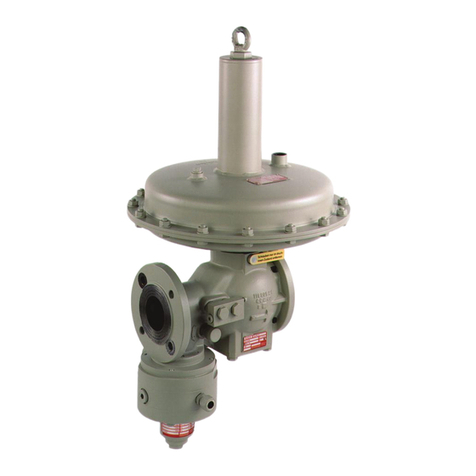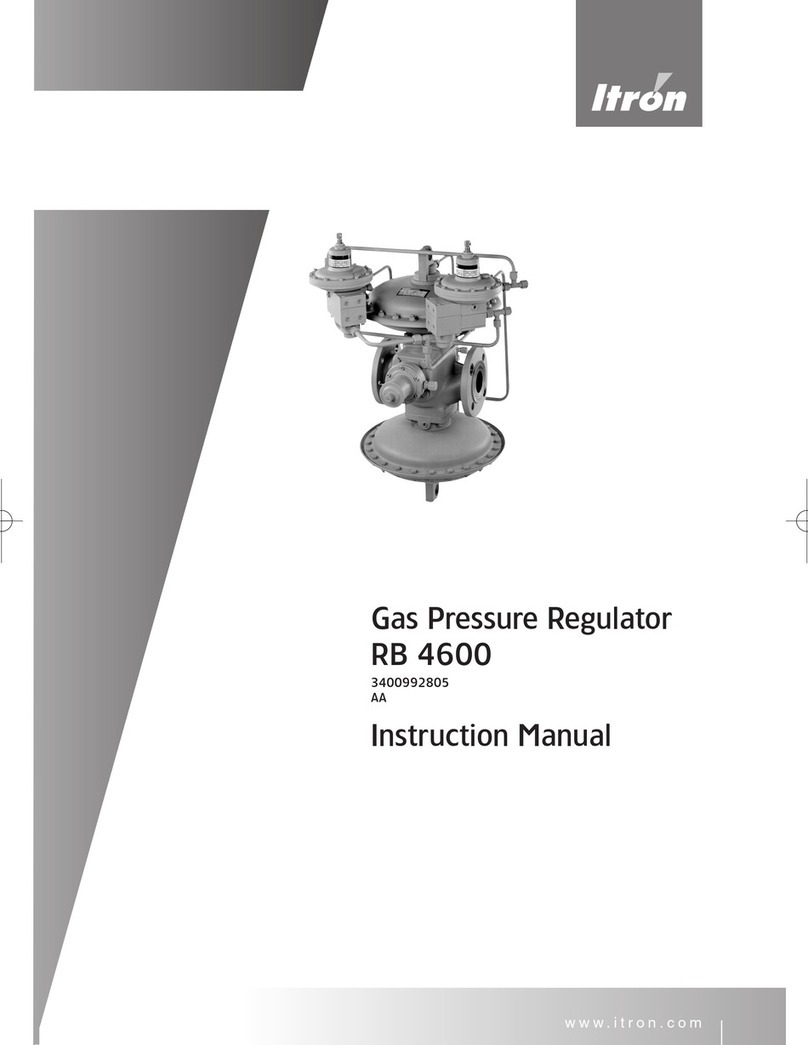
10
Regulator Start-up
After the pressure regulator has been installed, make sure that
the on/off valve upstream and downstream and the vent valve are
all closed.
»Partially open the upstream on/off valve slowly enough to pass
a very small amount of gas;
»Reset the safety shutoff valve (see the relevant Instruction
Manual). Note that a safety shutoff valve with over and
under- pressure protection is always closed in absence of
gas downstream from the regulator, where its sensing line is
connected.
»Check that the pressure rises slowly; the downstream pressure
must stabilize around the set value. If the pressure continues to
rise, interrupt the starting procedure by closing the upstream
on/off valve and identify the cause of the malfunction;
»After the outlet pressure has stabilized, open the on/off valve
completely;
»Then slowly open the downstream on/off valve until the piping
is completely filled.
At this point, the pressure regulator is operative.
Monitor Start-up
The same procedure must be followed when starting a monitor
and active system, bearing in mind that the pressure gauge
installed in the section in between the two regulators must
indicate the same pressure value as the upstream gauge.
Pressure Regulator Setting
The pressure regulator is usually delivered already set to the
specifications indicated in the order sheet. Whenever the set
pressure must be modified, this value must be set within the
setting range of the spring installed.
Make sure there is a flow demand or open the vent valve
downstream of the regulator. This valve should be closed after
the desired set pressure is obtained.
»To increase the set pressure: rotate the adjustment screw
clockwise using the adjustment wrench - see Fig 8.
»To decrease the set pressure: proceed as above, rotating the
spring adjustment screw counter-clockwise.
Maintenance
The maintenance operations required for the pressure regulator
(and the safety shutoff valve) are closely linked to the quality of
gas supplied (in terms of moisture content, liquid hydrocarbons
and impurities in general) and to the degree of filtration performed
upstream of the pressure regulator.
For this reason we recommend always installing a cartridge
filter upstream from the pressure regulator that is capable of
withholding the solid and liquid particles present in the gas that
might otherwise compromise efficient operation.
All pressure must be discharged before performing any
maintenance operation on the pressure regulator by proceeding
as follows:
»Close the on/off valves upstream and downstream,
»Slowly discharge the pressure by opening the vent valve
downstream from the pressure regulator until the gauge
indicates zero.
Before performing any maintenance operation on pressure
regulators fitted with overpressure and under pressure
shutoff devices, open the bypass between the inlet and outlet
chambers (see Instruction Manuals for safety shutoff valve). This
relieves the pressure that otherwise would be trapped upstream
from the valve disc of the safety shutoff device.
Disassembly
Check the following before beginning any disassembly
operations on the pressure regulator:
»The regulator must be depressurized as described above;
»The wrenches and other tools required for the operation must
be close at hand;
»Spare parts to replace damaged parts must be immediately
available.
Remember to:
»Disassemble the actuator top casing only after removing the
loading spring;
»Disassemble all parts carefully in order to avoid damage. Pay
extra attention to the rubber parts (using the appropriate tool
for the disassembly of the O-rings) and replace all parts that
exhibit even the slightest signs of damage.
Built-in safety valve
Thanks to its modular design, the retrofit - or change of
safety valve model - can be easily made on the field without
dismounting the regulator from the gas line. See Fig 9.
Noise abatement cage (silencer)
This part can be easily accessed from the bottom cap. See Fig 7
Fig. 8 - Setting key
Fig. 8 - silencer assembly (detail) Fig. 9 Safety shutoff valve assembly (detail)
Adjustment
screw
Setting key
The setting key - ref. 20231000 -
is provided on request.

